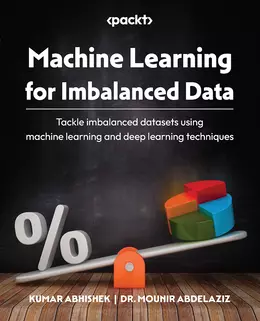
eBook Details:
- Paperback: 344 pages
- Publisher: WOW! eBook (November 30, 2023)
- Language: English
- ISBN-10: 1801070830
- ISBN-13: 978-1801070836
eBook Description:
Machine Learning for Imbalanced Data: Take your machine learning expertise to the next level with this essential guide, utilizing libraries like imbalanced-learn, PyTorch, scikit-learn, pandas, and NumPy to maximize model performance and tackle imbalanced data
As machine learning practitioners, we often encounter imbalanced datasets in which one class has considerably fewer instances than the other. Many machine learning algorithms assume an equilibrium between majority and minority classes, leading to suboptimal performance on imbalanced data. This comprehensive guide helps you address this class imbalance to significantly improve model performance.
Machine Learning for Imbalanced Data begins by introducing you to the challenges posed by imbalanced datasets and the importance of addressing these issues. It then guides you through techniques that enhance the performance of classical machine learning models when using imbalanced data, including various sampling and cost-sensitive learning methods.
As you progress, you’ll delve into similar and more advanced techniques for deep learning models, employing PyTorch as the primary framework. Throughout the book, hands-on examples will provide working and reproducible code that’ll demonstrate the practical implementation of each technique.
- Use imbalanced data in your machine learning models effectively
- Explore the metrics used when classes are imbalanced
- Understand how and when to apply various sampling methods such as over-sampling and under-sampling
- Apply data-based, algorithm-based, and hybrid approaches to deal with class imbalance
- Combine and choose from various options for data balancing while avoiding common pitfalls
- Understand the concepts of model calibration and threshold adjustment in the context of dealing with imbalanced datasets
By the end of this Machine Learning for Imbalanced Data book, you’ll be adept at identifying and addressing class imbalances and confidently applying various techniques, including sampling, cost-sensitive techniques, and threshold adjustment, while using traditional machine learning or deep learning models.



